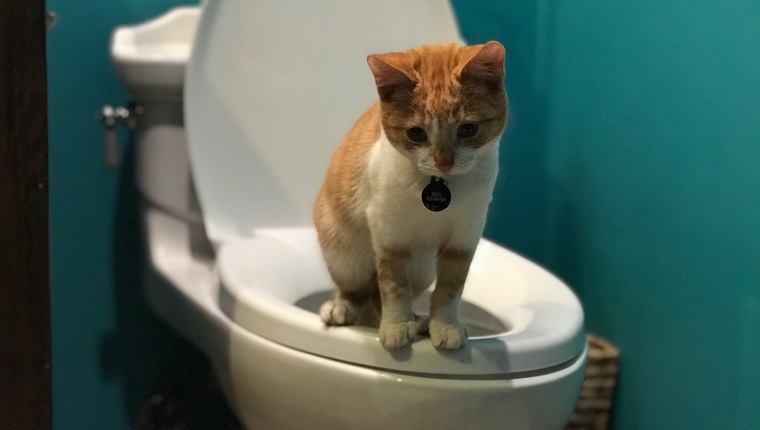Potential Risks of Flushing Cat Poop Down Your Toilet - Tips for Better Disposal
Potential Risks of Flushing Cat Poop Down Your Toilet - Tips for Better Disposal
Blog Article
Have you been interested in tips around Don’t flush cat feces down the toilet?

Introduction
As cat owners, it's important to bear in mind just how we get rid of our feline friends' waste. While it may seem practical to flush cat poop down the commode, this practice can have detrimental effects for both the environment and human health.
Alternatives to Flushing
The good news is, there are safer and much more responsible methods to get rid of feline poop. Think about the complying with options:
1. Scoop and Dispose in Trash
One of the most common technique of throwing away pet cat poop is to scoop it right into a naturally degradable bag and throw it in the garbage. Make certain to use a specialized litter scoop and throw away the waste without delay.
2. Use Biodegradable Litter
Opt for naturally degradable pet cat trash made from products such as corn or wheat. These clutters are environmentally friendly and can be safely gotten rid of in the trash.
3. Hide in the Yard
If you have a lawn, consider hiding cat waste in a marked area far from vegetable yards and water sources. Make certain to dig deep sufficient to avoid contamination of groundwater.
4. Install a Pet Waste Disposal System
Buy a pet garbage disposal system specifically designed for pet cat waste. These systems utilize enzymes to break down the waste, lowering odor and environmental effect.
Health Risks
Along with ecological concerns, flushing cat waste can additionally posture wellness risks to humans. Feline feces might consist of Toxoplasma gondii, a bloodsucker that can create toxoplasmosis-- a possibly severe illness, especially for expecting ladies and people with damaged body immune systems.
Environmental Impact
Purging cat poop introduces unsafe pathogens and bloodsuckers right into the water, presenting a substantial threat to water ecosystems. These contaminants can negatively impact marine life and compromise water top quality.
Verdict
Responsible pet ownership expands beyond providing food and sanctuary-- it likewise involves appropriate waste management. By avoiding purging pet cat poop down the bathroom and going with alternate disposal methods, we can decrease our environmental footprint and shield human health and wellness.
Why Can’t I Flush Cat Poop?
It Spreads a Parasite
Cats are frequently infected with a parasite called toxoplasma gondii. The parasite causes an infection called toxoplasmosis. It is usually harmless to cats. The parasite only uses cat poop as a host for its eggs. Otherwise, the cat’s immune system usually keeps the infection at low enough levels to maintain its own health. But it does not stop the develop of eggs. These eggs are tiny and surprisingly tough. They may survive for a year before they begin to grow. But that’s the problem.
Our wastewater system is not designed to deal with toxoplasmosis eggs. Instead, most eggs will flush from your toilet into sewers and wastewater management plants. After the sewage is treated for many other harmful things in it, it is typically released into local rivers, lakes, or oceans. Here, the toxoplasmosis eggs can find new hosts, including starfish, crabs, otters, and many other wildlife. For many, this is a significant risk to their health. Toxoplasmosis can also end up infecting water sources that are important for agriculture, which means our deer, pigs, and sheep can get infected too.
Is There Risk to Humans?
There can be a risk to human life from flushing cat poop down the toilet. If you do so, the parasites from your cat’s poop can end up in shellfish, game animals, or livestock. If this meat is then served raw or undercooked, the people who eat it can get sick.
In fact, according to the CDC, 40 million people in the United States are infected with toxoplasma gondii. They get it from exposure to infected seafood, or from some kind of cat poop contamination, like drinking from a stream that is contaminated or touching anything that has come into contact with cat poop. That includes just cleaning a cat litter box.
Most people who get infected with these parasites will not develop any symptoms. However, for pregnant women or for those with compromised immune systems, the parasite can cause severe health problems.
How to Handle Cat Poop
The best way to handle cat poop is actually to clean the box more often. The eggs that the parasite sheds will not become active until one to five days after the cat poops. That means that if you clean daily, you’re much less likely to come into direct contact with infectious eggs.
That said, always dispose of cat poop in the garbage and not down the toilet. Wash your hands before and after you clean the litter box, and bring the bag of poop right outside to your garbage bins.
https://trenchlesssolutionsusa.com/why-cant-i-flush-cat-poop/

I'm certainly very enthusiastic about How to Dispose of Cat Poop and Litter Without Plastic Bags and I hope you appreciated our piece. Sharing is good. You never know, you may just be helping someone out. I am grateful for your time. Come back soon.
Click Here Report this page